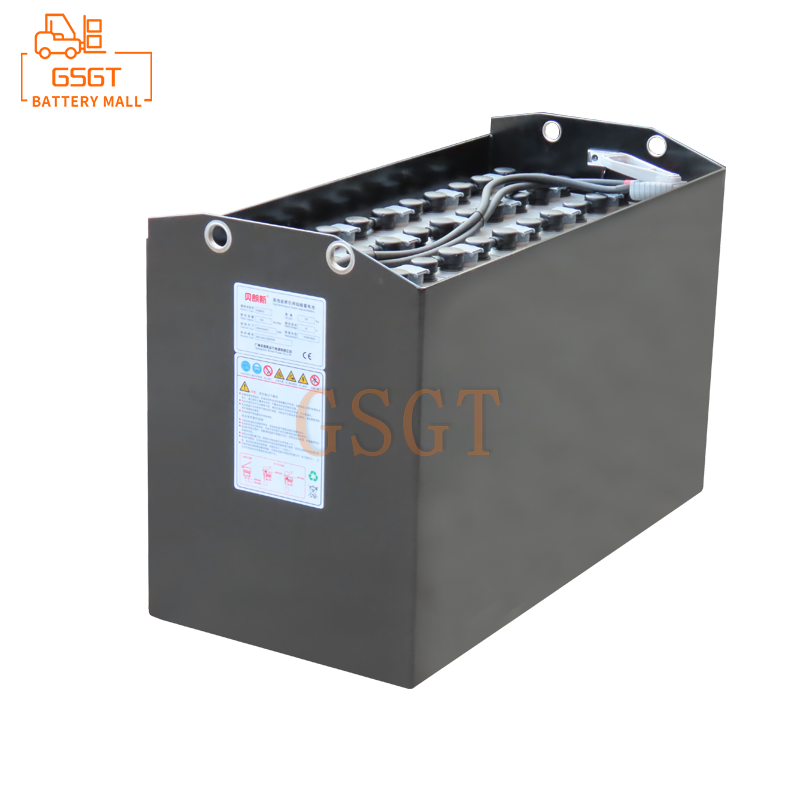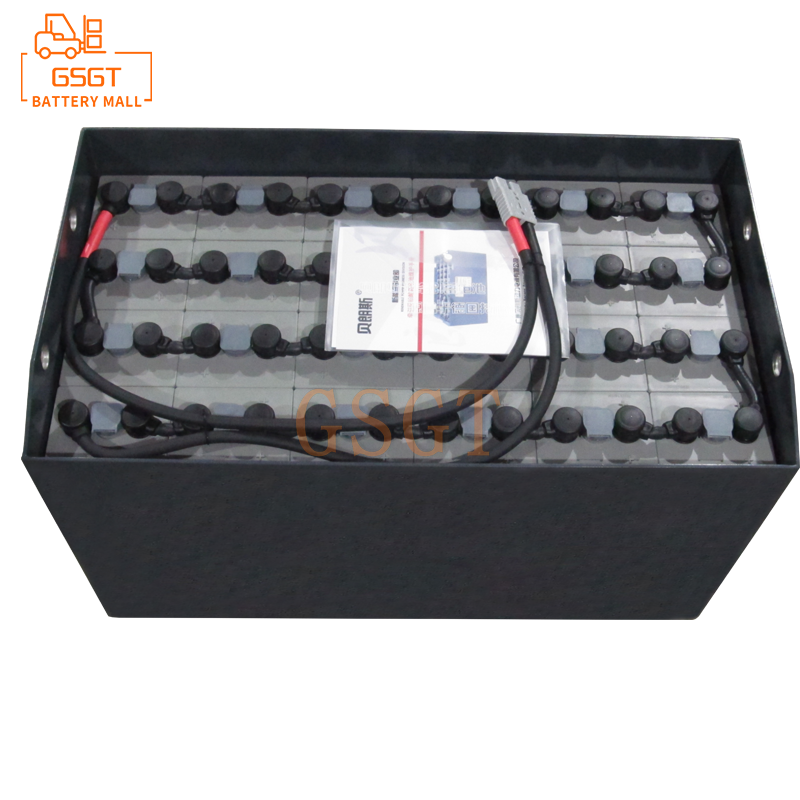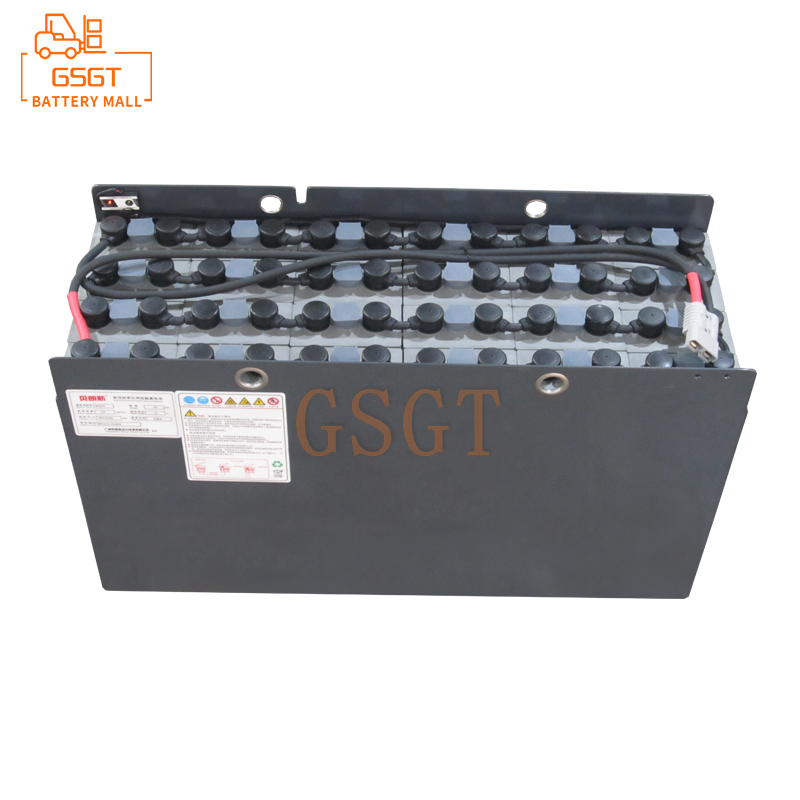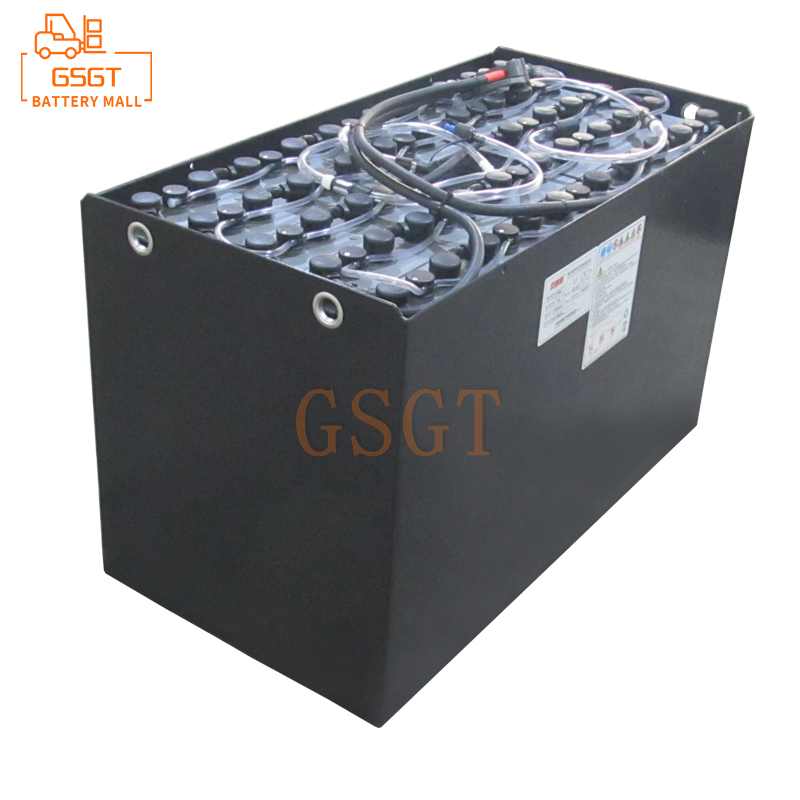Time:2025-06-10 09:53:44
Browse:601
In the industrial field, forklifts are important equipment for material handling, and lead-acid batteries, as the key power source of forklifts, their performance directly affects the working efficiency and operating costs of forklifts. Faced with a wide variety of forklift lead-acid battery products on the market, how to accurately select has become a difficult problem for many enterprises and users. This article will focus on five core parameters to deeply analyze the key points for purchasing lead-acid batteries for forklifts, helping you avoid traps and select high-quality and suitable products.
1. Voltage: The cornerstone for matching the electrical system of forklifts
The voltage specifications of lead-acid batteries for forklifts are diverse, with common ones including 24V, 48V, 80V, etc. Voltage is like "pressure" in a circuit, determining the driving capacity of current and playing a decisive role in the power output of forklifts. The electrical system design of forklifts of different models and tonnages is adapted to different voltages. Small-tonnage forklifts, such as 1-2 ton electric pallet trucks, mostly use 24V or 36V voltage batteries. These forklifts have relatively low power requirements, and the lower voltage is sufficient to drive the motor to operate, achieving short-distance material handling. Large-tonnage forklifts, such as heavy-duty forklifts weighing over 2 tons, often require batteries with voltages of 48V or even higher to meet their powerful power demands and ensure that the forklifts can easily handle complex working conditions such as heavy loads, long-distance travel, and climbing slopes.
If the voltage of the selected battery does not match that of the forklift, it will cause many serious problems. If the voltage is too low, the forklift will have difficulty starting, insufficient power during operation, the motor is prone to overheating and burning out, and the working efficiency will drop significantly. Excessively high voltage, exceeding the tolerance range of the forklift's electrical system, can damage key components such as the controller and motor, and even cause safety accidents. Therefore, when making a purchase, it is essential to carefully review the forklift's user manual or technical specification, clarify its applicable voltage, and strictly select the battery in accordance with the requirements. Do not blindly try non-standard voltages to avoid losing the big picture for the small gains.
2. Capacity: A key indicator of battery life and operational intensity
The capacity of the battery is measured in "ampere-hours (Ah)", which directly reflects the amount of electricity stored in the battery and is the core factor determining the forklift's endurance and its ability to handle different operation intensifies. If a forklift works for more than 8 hours a day and frequently moves heavy objects weighing over 3 tons and performs climbing operations, it is a high-intensity operation scenario that consumes a large amount of electricity. At this time, it is recommended to choose a large-capacity battery, such as 48V 600Ah or above, to ensure sufficient power supply and enable the forklift to operate continuously and efficiently. Conversely, for light-load and short-time operation scenarios, such as sporadic handling in small warehouses, where the goods are light in weight and the handling distance is short, a 48V 300-400Ah battery can meet the requirements. This not only reduces procurement costs but also avoids the forklift from being overloaded and having poor handling due to excessive configuration of large-capacity batteries, while also reducing unnecessary charging waiting time.
When determining the capacity, the convenience of charging also needs to be comprehensively considered. If the enterprise's charging facilities are complete and support forklifts to be charged at any time, medium-capacity batteries can be selected. The forklifts can be charged multiple times for short periods during operation intervals to maintain operation. If the charging conditions are restricted and centralized charging can only be carried out at night, a large-capacity battery should be selected to ensure that the forklift operates without power interruption throughout the day. In addition, for forklifts of different brands and models, the battery compartment space is limited. The selected battery size must be precisely matched with the battery compartment; otherwise, installation cannot be carried out. Although some forklifts can accommodate large-capacity batteries by modifying their battery compartments, professional assessment is required to ensure that the overall structure and performance of the forklift are not affected. Moreover, factors such as modification costs and safety also need to be taken into consideration.
3. Size and Weight: Important parameters for adapting to the structure of forklifts
The size and weight of lead-acid batteries are closely related to their capacity. Generally, the larger the capacity, the larger the size and the heavier the weight. When designing forklifts, there are strict limits on the size and load-bearing capacity of the battery compartment. This requires that the size of the purchased battery must perfectly match the battery compartment, and the weight must also be within the load-bearing range designed for the forklift. Common battery size parameters include length, width and height. Before purchasing, it is necessary to accurately measure the corresponding size of the forklift battery compartment and refer to the battery product specification table to select a product with a suitable size. Moreover, the installation and fixation holes, connection methods, etc. should also be consistent with the original design of the forklift to ensure stable installation and reliable connection.
If the size of the battery is too large, it cannot be installed in the battery compartment. If the size is too small and shakes inside the battery compartment, it may cause loose connections, wear and tear of the circuits, affect normal use, and even pose safety hazards. However, if the battery is too heavy and exceeds the designed load capacity of the forklift, it will cause the forklift's center of gravity to be unstable. During driving, turning, and lifting goods, it is very likely to tip over, endangering the life safety of the operator. At the same time, it will increase the burden on the forklift's suspension, tires and other components, accelerate wear and shorten the service life of the forklift. Conversely, if the weight is too light, although it does not pose a direct threat to the structural safety of the forklift, it may mean that the battery capacity is insufficient and cannot meet the operational requirements of the forklift. Therefore, the parameters of size and weight should not be ignored when making a purchase and need to be carefully weighed.
4. Cycle Life: A key indicator for measuring battery durability
Cycle life refers to the number of complete charge and discharge cycles a battery can undergo under specific conditions, and it is an important criterion for evaluating the durability and service life of forklift lead-acid batteries. Generally speaking, high-quality lead-acid batteries for forklifts can be charged and discharged up to 1,500 times in a cycle. Batteries with a long cycle life do not require frequent replacement during long-term use, which can significantly reduce the operating costs of enterprises, decrease the downtime of forklifts caused by battery replacement, and improve the utilization rate of equipment.
The material of the plates is the core factor affecting the cycle life of the battery. High-quality lead-acid batteries use electrolytic lead as the raw material for the plates, featuring high purity and few impurities. This can effectively reduce the self-discharge rate and minimize power loss. Positive grid plates are mostly formed by die-casting reinforced multi-element low-antimony corrosion-resistant alloys, featuring low internal resistance and high-rate discharge performance, which can reduce sulfidation and corrosion of the plates. Plate sulfation is a common fault in lead-acid batteries, which can lead to increased internal resistance, reduced capacity and poor charging and discharging performance of the battery. However, corrosion-resistant alloy grid plates can significantly enhance the anti-sulfation ability of the plates and extend the service life of the battery. In addition, the charge and discharge management strategy of the battery also has a significant impact on the cycle life. Frequent deep discharges will accelerate battery aging and shorten cycle life. Therefore, choosing a battery with deep discharge recovery function, reasonably controlling the depth of charging and discharging, avoiding overcharging and overdischarging, and regularly performing equalization charging maintenance on the battery all help to extend the battery's cycle life and fully leverage its performance.
5. Charging Time: An important factor affecting the efficiency of forklift usage
The length of battery charging time is directly related to the usage efficiency and operating costs of forklifts. The charging time mainly depends on the battery capacity, charger power and charging method. Large-capacity batteries store a lot of electricity, and the natural charging time is relatively long. The greater the power of the charger, the more electricity can be input to the battery within a unit of time, and the faster the charging speed. The traditional slow charging method usually charges at a current of 0.1 to 0.15 times the battery capacity.
To address this issue, some enterprises have launched fast-charging lead-acid batteries and their matching chargers. Fast charging technology can significantly reduce the charging time by optimizing the charging algorithm and increasing the charging voltage and current, greatly enhancing the utilization efficiency of forklifts. However, fast charging has higher performance requirements for battery plates, electrolyte and other components. Frequent fast charging may have a certain impact on battery life. Therefore, when choosing the charging time, factors such as the operation frequency of the forklift, the conditions of the charging facilities, and the battery life need to be comprehensively considered. If the forklift operation intensity is high and the shifts are frequent, with extremely high requirements for usage efficiency, and the enterprise has complete fast charging facilities and battery maintenance capabilities, batteries that support fast charging can be given priority. If the forklift operation is relatively infrequent and the battery life is of great importance, the traditional slow charging method combined with medium-capacity batteries might be a more suitable choice.
When choosing lead-acid batteries for forklifts, the five core parameters - voltage, capacity, size and weight, cycle life, and charging time - are interrelated and influence each other. Any improper selection of these parameters may lead to poor battery performance, abnormal operation of the forklift, and even cause safety accidents and high cost expenditures. During the actual purchasing process, it is recommended that you thoroughly understand the working environment, work intensity, usage frequency and other information of the forklift. Combine your own budget and long-term operation plan, and refer to the opinions of more professionals to comprehensively weigh each parameter. At the same time, choose well-known brands and reliable quality products to ensure that the selected battery is perfectly compatible with the forklift, providing a solid guarantee for the efficient and stable operation of the forklift. Help enterprises reduce operating costs and improve economic benefits.

$2450

$2670

$1630

$3050

MESSAGE
Professional And Efficient
Security
Affordable Price
Professional Services